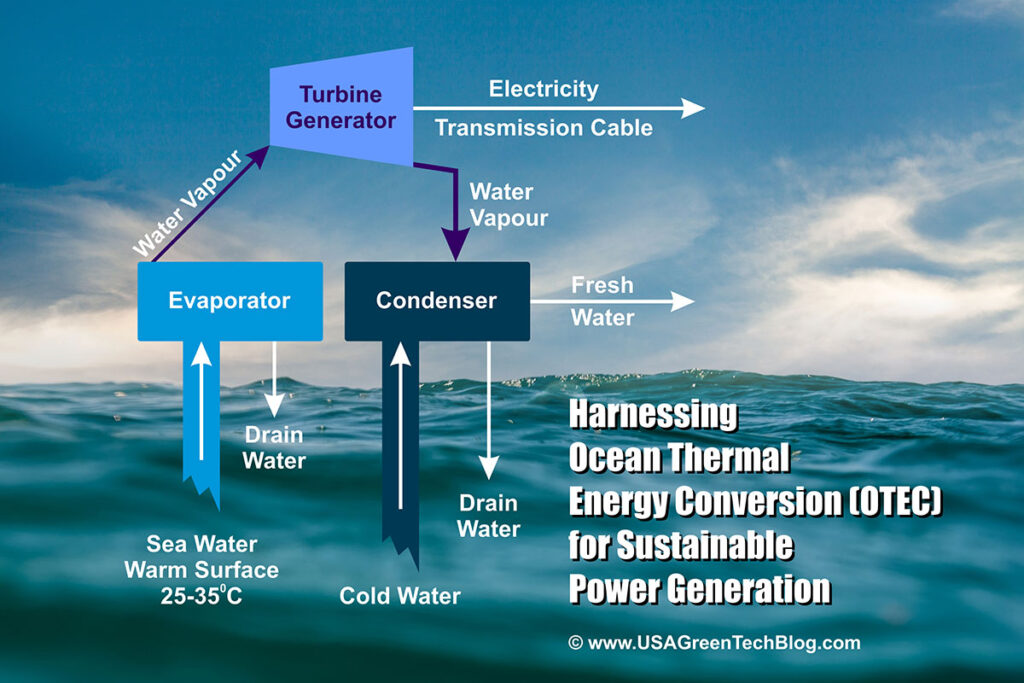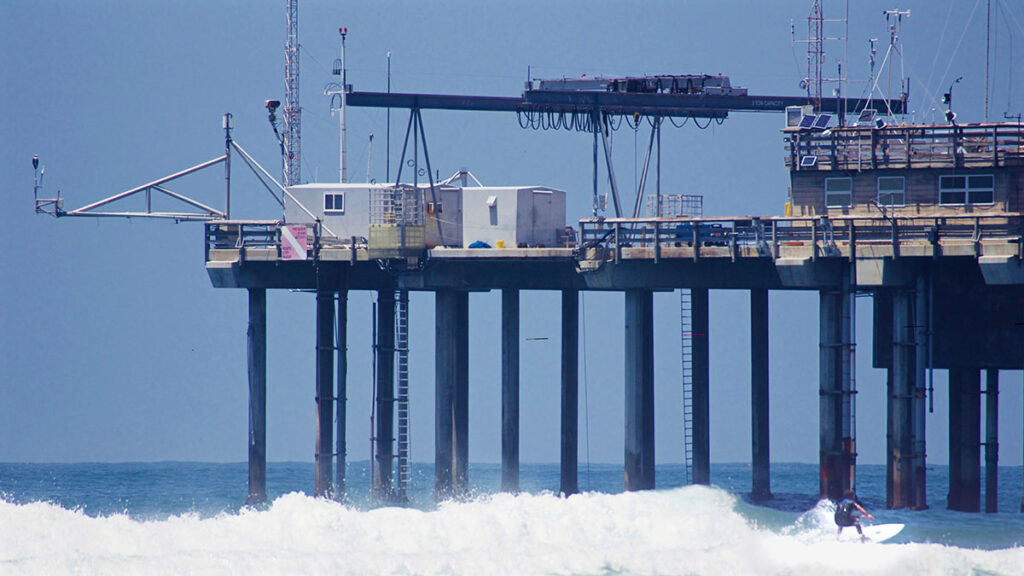Harnessing Ocean Thermal Energy Conversion (OTEC) for Sustainable Power Generation
Table of Contents

1. Introduction to Ocean Thermal Energy Conversion (OTEC)
Ocean Thermal Energy Conversion (OTEC) is an innovative technology designed to harness the temperature difference between the warm surface waters and the colder deep waters of the ocean to generate electricity. This process taps into a vast, largely untapped renewable energy source, offering significant potential to support sustainable energy generation. OTEC works best in tropical and subtropical regions where the temperature difference is more pronounced, typically at least 20°C between the surface and deeper waters. By capturing this thermal energy, OTEC can continuously produce electricity, contributing to the global push towards reducing reliance on fossil fuels and mitigating climate change.
OTEC is a clean, renewable form of energy that, unlike solar or wind power, operates 24/7, independent of weather conditions. This gives it a substantial advantage in providing base-load energy—a consistent energy supply that many renewable technologies struggle to offer. It is important to understand how OTEC works and why its development could revolutionize energy generation, especially for island nations and coastal regions.
“Harnessing Ocean Thermal Energy Conversion (OTEC) for Sustainable Power Generation” Ocean Thermal Energy Conversion (OTEC) uses the temperature difference between warm surface and cold deep ocean waters to produce renewable energy. Operating continuously, it’s ideal for tropical regions. OTEC systems—closed, open, and hybrid cycles—convert thermal energy into electricity. While it offers benefits like 24/7 power and reduced carbon emissions, challenges include high costs and environmental impacts. With technological advancements, OTEC has the potential to contribute significantly to global sustainable energy efforts.
2. How OTEC Works: Principles and Technology
(Harnessing Ocean Thermal Energy Conversion (OTEC) for Sustainable Power Generation)
The basic principle behind OTEC is rooted in the thermodynamic cycle—using heat to do work. In OTEC, the temperature difference between the warm surface water and the cold deep ocean water is used to drive a heat engine, much like a traditional steam engine. Here’s a simple breakdown:
- Warm surface water is pumped to evaporate a working fluid, such as ammonia, which has a low boiling point.
- The evaporation of the fluid creates a high-pressure vapor that spins a turbine connected to a generator, producing electricity.
- Cold water from the ocean’s depths (typically at a depth of about 1,000 meters) is pumped up to cool and condense the vapor back into a liquid, ready to repeat the process.
OTEC plants are primarily located in coastal areas or on floating platforms in deep oceans. The systems can be divided into three main types, depending on how the energy conversion process is handled:
- Closed-Cycle, Open-Cycle, and Hybrid-Cycle OTEC. Each of these systems operates on a similar fundamental principle but differs in the working fluid and the exact method of power generation.
3. Advantages of OTEC as a Renewable Energy Source
(Harnessing Ocean Thermal Energy Conversion (OTEC) for Sustainable Power Generation)
OTEC provides several key advantages that make it a promising renewable energy source:
- 24/7 Power Generation: Unlike solar or wind power, OTEC operates continuously, providing a reliable, constant source of energy.
- Large Energy Potential: The oceans cover more than 70% of the Earth’s surface, meaning there is a vast resource of thermal energy available, especially in tropical regions.
- Carbon-Neutral: OTEC produces no direct greenhouse gas emissions, making it an environmentally friendly alternative to fossil fuels.
- Energy Independence for Island Nations: OTEC systems can provide energy security for small island nations that are currently dependent on imported fossil fuels.
- Support for Desalination: In addition to electricity, OTEC can support freshwater production through desalination, solving two critical issues—power and water supply.
These benefits highlight the potential for OTEC to play a vital role in meeting global energy needs while promoting sustainability and reducing the carbon footprint.
4. Challenges and Limitations of OTEC Systems
(Harnessing Ocean Thermal Energy Conversion (OTEC) for Sustainable Power Generation)
Despite its promise, OTEC faces several significant challenges:
- High Initial Costs: The upfront investment for OTEC infrastructure, including pipelines to access deep cold water and the construction of offshore facilities, can be substantial.
- Energy Efficiency: OTEC systems currently have a relatively low energy efficiency, often between 3-5%. This means large-scale systems are required to generate significant amounts of electricity.
- Environmental Concerns: While OTEC itself is clean, the extraction of deep ocean water can have environmental consequences, potentially affecting marine ecosystems if not carefully managed.
- Geographical Limitations: OTEC is only feasible in regions where there is a significant temperature gradient, typically within 20 degrees latitude of the equator. This limits its widespread application globally.
Innovations in engineering and material science are ongoing to address these limitations, aiming to make OTEC more economically feasible and environmentally sound.
5. Types of OTEC Systems: Closed Cycle, Open Cycle, and Hybrid Cycle
(Harnessing Ocean Thermal Energy Conversion (OTEC) for Sustainable Power Generation)
There are three main types of OTEC systems:
- Closed-Cycle OTEC: This system uses a working fluid with a low boiling point, such as ammonia. Warm surface water evaporates the fluid, and the resulting vapor drives the turbine. The vapor is then cooled by cold water from the ocean depths and condensed back into a liquid.
- Open-Cycle OTEC: In this system, seawater itself is used as the working fluid. Warm surface seawater is placed in a low-pressure container, where it boils and produces steam. This steam drives the turbine, and the cold deep water condenses the steam back into liquid.
- Hybrid-Cycle OTEC: The hybrid system combines aspects of both closed and open cycles. Warm seawater is used to evaporate a working fluid, and the resulting vapor powers the turbine. In addition, the open cycle produces steam, which is also used for additional power generation or desalination.
Each system has its pros and cons, but all offer innovative ways to harness the ocean’s thermal energy.
6. OTEC and Environmental Impacts: A Balanced Approach
(Harnessing Ocean Thermal Energy Conversion (OTEC) for Sustainable Power Generation)
While OTEC is considered an environmentally friendly energy source, its deployment does have potential impacts on marine ecosystems:
- Oceanic Displacement: The pumping of large volumes of cold water from deep ocean layers can disturb marine life, especially in sensitive deep-sea ecosystems.
- Chemical Spills: In closed-cycle systems, the use of chemicals like ammonia poses a potential risk of leakage, which could harm marine organisms if not properly managed.
- Thermal Pollution: The release of cold deep-sea water back into the warmer surface layer could disrupt local ecosystems, potentially affecting coral reefs and other sensitive habitats.
Mitigating these impacts requires careful planning, design, and continuous monitoring. OTEC plants must balance the benefits of clean energy with the responsibility of protecting oceanic biodiversity.
7. Global OTEC Projects and Developments
(Harnessing Ocean Thermal Energy Conversion (OTEC) for Sustainable Power Generation)
Several countries and organizations are exploring OTEC technologies:
- Hawaii: As a leader in OTEC research, Hawaii has several OTEC test plants and is at the forefront of developing this technology.
- Japan: Japan is another major player, with ongoing projects aimed at commercializing OTEC.
- France: France has developed OTEC plants in its overseas territories, such as Réunion Island.
- Caribbean Nations: Small Island nations like the Bahamas and Martinique have also expressed interest in OTEC as a means to achieve energy independence.
These projects highlight the global interest in developing OTEC and improving its viability for widespread use.
8. Economic Viability of OTEC
(Harnessing Ocean Thermal Energy Conversion (OTEC) for Sustainable Power Generation)
The economic viability of OTEC depends on several factors:
- Cost of Infrastructure: OTEC requires significant investment in infrastructure, especially for deep-sea water pipes and offshore facilities.
- Energy Production: While OTEC can produce continuous energy, its efficiency is currently lower than other renewable sources like wind or solar, which could make it more expensive per kilowatt-hour.
- Carbon Credits and Incentives: As governments push for greener energy solutions, OTEC could benefit from carbon credit programs and other incentives designed to promote renewable energy.
If technological advancements reduce costs and improve efficiency, OTEC could become a competitive source of renewable energy, particularly in regions where other options are limited.
9. OTEC’s Role in Combating Climate Change
(Harnessing Ocean Thermal Energy Conversion (OTEC) for Sustainable Power Generation)
OTEC has the potential to play a significant role in combating climate change by providing a large-scale, carbon-neutral energy source. By tapping into the ocean’s thermal energy, OTEC reduces the need for fossil fuels, helping to lower greenhouse gas emissions. Moreover, OTEC can provide reliable power to remote islands and coastal areas, reducing their dependency on imported oil and coal. This not only cuts emissions but also enhances energy security for these vulnerable regions.
Additionally, OTEC’s potential for desalination could help address water scarcity, which is becoming an increasingly pressing issue as global temperatures rise.
10. Future Outlook: Scaling OTEC for Global Energy Needs
(Harnessing Ocean Thermal Energy Conversion (OTEC) for Sustainable Power Generation)
The future of OTEC looks promising as technological advancements make the systems more efficient and cost-effective. Scaling OTEC to meet global energy demands will require ongoing research, investment, and international collaboration. However, with the right support, OTEC could become a critical part of the world’s renewable energy mix, particularly for countries in tropical regions. As more countries set ambitious targets for reducing carbon emissions, OTEC could help them achieve these goals by providing a stable, continuous source of clean energy.
If governments and private sectors continue to invest in OTEC, we could see a rapid expansion of this technology in the coming decades, helping to drive a global transition to sustainable energy systems.
Reference Links:
(Harnessing Ocean Thermal Energy Conversion (OTEC) for Sustainable Power Generation)
1. NOAA – Ocean Thermal Energy Conversion (https://www.noaa.gov)
2. OTEC Foundation – How OTEC Works (https://www.otecfoundation.org)
3. NREL – Ocean Thermal Energy Conversion (OTEC)
4. Hawaii Natural Energy Institute – OTEC Projects
5. OTEC Technology – Potential and Challenges
Please check for articles on other categories
Appeal to www.USAGreenTechBlog.com Readers
Thank you for visiting www.USAGreenTechBlog.com! We greatly value your presence here and your interest in our articles. Your thoughts and feedback are incredibly important to us, and we’d love to hear from you. Please take a moment to leave a comment on our articles and share your insights. Your feedback helps us improve and deliver more content that matters to you.
If you enjoyed the article or found it helpful, don’t forget to share it with your friends and family. Together, we can continue building a community that stays informed and engaged. Let us know what you think, and feel free to share your suggestions for future topics!


